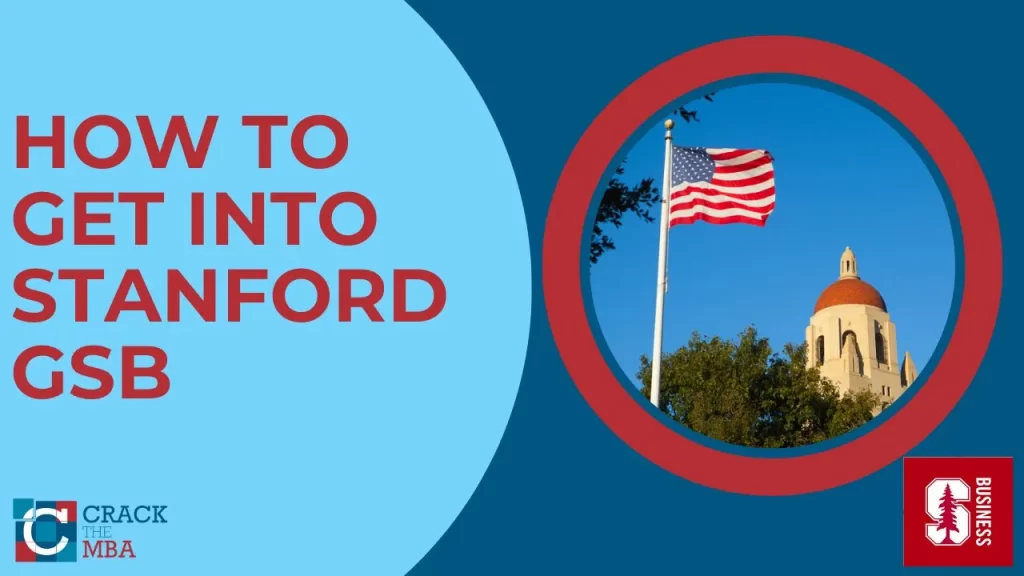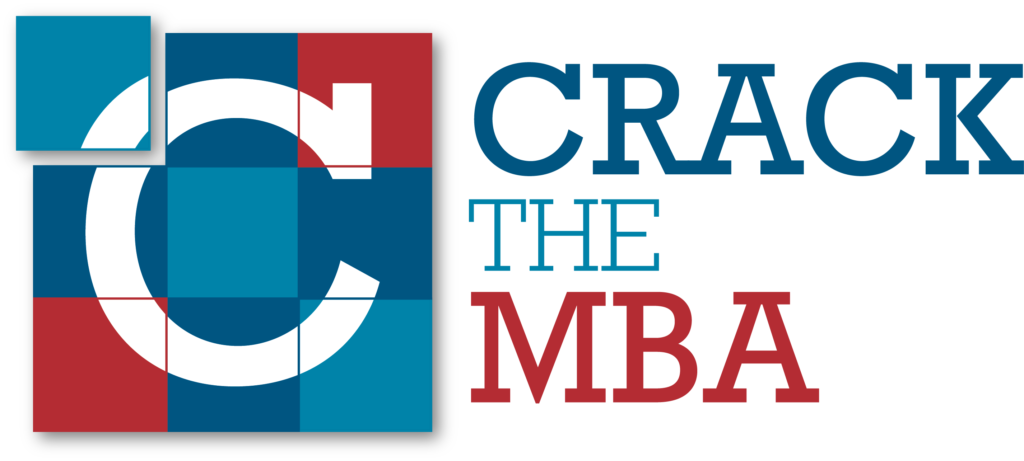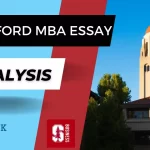How to get into Stanford GSB MBA program
Getting into Stanford Graduate School of Business (GSB) is a dream for many aspiring MBA students. Known for its rigorous curriculum, world-renowned faculty, and unparalleled networking opportunities, the GSB is consistently ranked among the top business schools in the world. However, the admissions process is highly competitive, and the school receives thousands of applications each year. So, what does it take to stand out and secure a spot in this prestigious program?

In this article, we will provide an overview of the admissions process at the Stanford GSB, and offer tips and strategies for creating a strong application that showcases your qualifications and sets you apart from the competition. Whether you’re just starting to think about applying or you’re in the final stages of putting together your application, this guide will help you understand what the GSB is looking for and how to present yourself as the best possible candidate.
What makes Stanford GSB one of the most sought-after business schools?
Stanford Graduate School of Business (GSB) is considered one of the most sought-after business schools in the world for several reasons. Some of the key factors include:
- Prestige: Stanford GSB is consistently ranked as one of the top business schools in the world by various organizations, such as U.S. News & World Report and Financial Times.
- Location: Stanford GSB is located in the heart of Silicon Valley, which is one of the most important centers of entrepreneurship and innovation in the world. This proximity to cutting-edge technology companies and venture capital firms provides students with unique networking opportunities and exposure to the latest business trends.
- Faculty: Stanford GSB has a highly renowned faculty, many of whom are leaders in their fields and have significant industry experience. Stanford GSB has 119 faculty featuring Nobel laureates, members of the National Academy of Sciences, and members of the American Academy of Arts and Sciences.
- Curriculum: The school’s curriculum is highly regarded for its emphasis on leadership, innovation, and entrepreneurship.
- Alumni network: Stanford GSB has an extensive alumni network that spans the globe, with many successful business leaders and entrepreneurs. With over 30,000 graduates, the Stanford Graduate School of Business has a large and active alumni community that is actively engaged in fostering professional growth and strong networks for its members. Some famous people who went to Stanford GSB include:
- Phil Knight, Billionaire Founder and Chairman of Nike, MBA 1962
- Mukesh Ambani, Billionaire Indian Businessman and Chairman of Reliance industries (dropped out from Stanford GSB), 1980
- Vinod Khosla, Tech entrepreneur and venture capitalist, MBA 1980
- Mary Barra, Chairman, and CEO of General Motors, MBA 1990
- Rishi Sunak, Prime Minister of the United Kingdom (2022–present), MBA 2006
- Akshata Murthy, Indian heiress, businesswoman, fashion designer and venture capitalist; MBA 2006
- Gazal Kalra, CEO of BlueAtom.AI, and ex-Co-founder Rivigo, Founder; MBA 2014
- Financial Aid: The school has a generous financial aid program that makes the MBA education affordable for students who might not be able to afford it otherwise. The average Stanford GSB scholarship for the class of 2023 was approximately $42,000 per year or $84,000 for the two-year MBA program.
- Small Class size: Stanford GSB has a relatively small class size (class of 2024 has 424 students) compared to other top business schools, which allows for more personalized attention and a tight-knit community.
Stanford MBA Class of 2024
Here are a few important metrics of the latest class of Stanford GSB i.e., the Class of 2024. These numbers will help you understand where you stand currently as compared to people who made it to Stanford GSB.
For example, the average GPA of the Stanford MBA Class of 2024 is 3.76. Is your current GPA comparable to this GPA? Are your GMAT/GRE scores and work experience comparable to the averages?
As you compare yourself, you should also note that these are only quantitative factors. Qualitative factors like leadership, teamwork, quality of work experience, essay, and letters of recommendation will also play a key role in determining your chances of getting into Stanford GSB.
That being said, these quantitative factors can help you compare your candidacy more objectively.
Enrollment
Applications Received by Stanford GSB – 6,152
Total Enrolled – 424
Enrollment rate – 6.9%
Test Scores, GPA, and work experience
Average work experience – 4.9 years
Average GPA – 3.76 on a 4-point scale
GMAT Score
- Average GMAT – 737
- GMAT Range: 630-790
GRE Score
- Average GRE Quant – 163
- Average GRE Verbal – 164
Average TOEFL score – 113
Undergraduate Major
| Undergraduate Major | Percentage of Stanford MBA Class of 2024 |
| Engineering | 24% |
| Economics | 21% |
| Social Sciences | 20% |
| Business/Commerce | 19% |
| Math/Sciences | 9% |
| Arts/Humanities | 6% |
Pre MBA industry
| Pre-MBA industry | % of Stanford MBA Class of 2024 |
| Consulting | 20% |
| Investment Management/Venture Capital/Private Equity | 20% |
| Technology | 15% |
| Nonprofit/Government/Education | 8% |
| Consumer Products & Services | 7% |
| Media/Entertainment/Arts | 5% |
| Financial Services | 4% |
| Health Care | 5% |
| Military | 4% |
| Cleantech/Energy/Environmental | 3% |
| Manufacturing | 3% |
| Other | 5% |
So, what did Stanford GSB see in these candidates that you can take inspiration from? Let’s take a look.
Do you want to get into Stanford GSB?
At Crack The MBA, we have helped hundreds of students get into top MBA programs around the world. We would be happy to help you too. Get in touch with us to learn more about our MBA application services.
What does Stanford GSB look for in applicants?
There is no checklist because Stanford GSB believes that there is no typical Stanford MBA applicant. Stanford MBA admissions committee advises applicants to just focus on authenticity and ensure that the application is a true reflection of their candidacy.
However, Stanford GSB looks at three evaluation criteria:
- How You Think
- How You Lead
- How You See the World
How You Think
Stanford MBA admissions committee looks at more than just your grades and test results when deciding whether or not to accept your application. They definitely take your GPA and GMAT/GRE scores into consideration when determining if you are ready for the academic program, but also take a far broader look.
As you fill out your application, they want you to reflect on instances in which you took the effort to expand your knowledge, tackle difficult problems, or gain new perspectives. In what ways have you taught others about what you’ve discovered? Why is it important to you and to other people? Share about them so that the admissions officers can get a better sense for how your life experiences, both within and outside of the classroom, might enrich Stanford GSB’s learning community.
How You Lead
Stanford believes that past actions are the best predictor of future actions. These past actions will help you show your leadership potential to Stanford’s MBA admissions committee.
In a corporation, at every level and in every department, there are people who act as leaders and direct their teams to success. To be a leader, you need not be in a certain position or have a particular title. Stanford MBA admissions officers are interested in hearing about times when you took the initiative, overcame obstacles, included others, and helped individuals in your immediate vicinity. They are interested in hearing about your experiences displaying these traits in any context, whether at school, in the workplace, or in a club or organization that you are a part of.
Application forms and resumes provide space for you to elaborate on your interests and professional background. In letters of recommendation, your recommenders will additionally elaborate on the ways in which you have contributed to the organization. You can also use the application’s optional short-answer question to elaborate on the impact you’ve had and why you think it’s noteworthy.
How You See the World
Your path will be enriched by the values, beliefs, identities, and goals you share with your peers. In your application essays, Stanford GSB gives you the chance to write about the things that are most important to you and your hopes for the future. How did your upbringing influence the decisions you’ve made and the goals you’ve set for yourself?
Stanford’s collaborative teaching model capitalizes on students’ varied backgrounds to provide a rich tapestry of ideas and methods for tackling real-world problems, which is why they prioritize admitting applicants who can add to the richness of the MBA class. This diversity, broadly construed, can help you learn from the perspectives of others, test your own beliefs, and broaden your horizons.
Spend some time thinking about who you are, and be confident in that person.
Remember, a “typical” or “ideal” Stanford MBA student does not exist. For the application, they merely ask that you be genuine.
Take a look at this 7-step guide to getting into Harvard Business School
How to get into Stanford GSB
Getting into Stanford MBA is highly competitive owing to a small class size. The enrollment rate for the class of 2024 was a mere 6.9%. So, how do you make yourself get noticed by Stanford’s MBA admissions committee? Here’s how you can do it.
Step 1 – Assess your fit with the Stanford GSB MBA program
To assess your fit for the Stanford GSB MBA program, start with your due diligence by researching various aspects of the business school. Here’s what you can do:
- Review the admissions website: The GSB admissions website has a wealth of information about the program and the admissions process, including requirements, application deadlines, and evaluation criteria.
- Attend an admissions event: Attend an admissions event such as an information session or an open house to learn more about the program and the admissions process. This is also a great opportunity to meet current students, faculty, and staff and ask questions.
- Talk to current students and alumni: Reach out to current students and alumni to ask about their experiences with the program and the admissions process. They can provide valuable insights and tips on how to stand out in the application process.
- Read Stanford GSB admissions blog: GSB insights blog and the GSB news are great resources to find more information about the school, its culture, and student experience.
- Watch the application webinars: The admissions team at Stanford holds application workshops every year. Viewing these could help you with your essay-writing process. It could also help you with Stanford’s application specifically.
- Research the faculty and the curriculum: Research the faculty and the curriculum to understand the areas of expertise of the faculty and the curriculum offered. It will give you a sense for which areas you might be particularly interested in and how GSB aligns with your career goals.
These steps will help you assess how well you fit with the school’s culture and values and how you can contribute to the diversity and dynamism of the student body.
Step 2 – Assess your academics and test scores
Your GPA and GMAT/GRE scores are really important aspects of the evaluation process. Stanford GSB boasts one of the highest GPAs and GMAT/GRE scores among top business schools. The average GPA for the class of 2024 is 3.67 (4-point scale), the average GMAT score is 737, and the average GRE quant is 163 and the average GRE verbal is 164.
You might not be able to do much with your GPA if it’s on the lower side. However, to compensate for a low college GPA, try scoring higher than the average GMAT/GRE score of the Stanford MBA class of 2024.
Here is what Kirsten Moss, assistant dean of MBA admissions and financial aid, had to say on academics and test scores.
How Stanford Evaluates Academic Engagement
How Stanford Evaluates U.S. and International GPAs
Advice Regarding Test Scores
It is worth noting that Stanford GSB is considered one of the most selective MBA programs in the world, and a high GPA and GMAT/GRE score are important, but they are not the only factors that the admissions committee considers. They also evaluate professional experience, goals and motivations, personal characteristics, recommendations, essays, and interview performance when making admission decisions.
This brings us to Step 3
Step 3 – Create a strong and authentic essay
The essence of a successful Stanford MBA application is authenticity. Therefore, while writing the Stanford MBA essays make sure that the information you share reflects your truest self. Stanford asks you to respond to two main essay questions on the following topics:
Essay 1 – What matters most to you, and why? (650 words)
Essay 2 – Why Stanford? (400 words)
Stanford GSB also allows you to write three optional Impact essays on the following topic:
- We are also interested in learning about the things you have done that are most meaningful to you. If you would like to go beyond your resume to discuss some of your contributions more fully, you are welcome to share up to three examples (up to 1,200 characters, or approximately 200 words, for each example)
Think about times you’ve created a positive impact, whether in professional, extracurricular, academic, or other settings. What was your impact? What made it significant to you or to others?
The Stanford Graduate School of Business (GSB) essay prompt “What matters most to you, and why?” is a very open-ended question that allows you to showcase your personal values, goals, and motivations. Here are some tips to help you write a strong essay:
- Reflect on your values and goals: Take some time to reflect on what matters most to you, and what values and goals are most important to you. Think about what drives you and what makes you excited and energized. As you formulate your response, remember the three general criteria: how you think, how you lead, and how you see the world.
- Choose specific anecdote(s): Once you have identified what matters most to you, choose 1-2 specific anecdotes that illustrate that value or goal in a meaningful way. This could be a personal experience, a professional achievement, or a community service project, among others. Be detailed in your storytelling, and explain how the experience or accomplishment has shaped you as a person and a leader.
- Show how the value or goal aligns with the GSB culture: Highlight how your value or goal aligns with the culture, values and mission of the GSB program, and why it makes you an ideal candidate for the program.
- Highlight your future potential: Show the admissions committee how you plan to continue to develop and use the value or goal in the future, and how it will help you to make an impact in your future career and your community.
- Show your personal side: This prompt is a great opportunity to show who you are as a person. This is something the admissions committee might not be able to see in other parts of the application, so don’t be afraid to be vulnerable and honest in your essay.
Remember, the admissions committee is interested in learning about who you are and what matters most to you. This essay is your chance to showcase your personal values and goals, and how they align with those of the GSB program. By following these tips, you will be able to write an essay that demonstrates why you are a strong fit for the program and how you will make the most of the opportunity.
The essay prompt “Why Stanford?” is a question that requires you to demonstrate your knowledge of the school and its resources, and explain why you are a good fit for the MBA program at Stanford GSB. Here are some tips to help you write a strong essay:
- Research the school: Before you begin writing your essay, research the school and its resources. Look at the school’s mission, values, and culture, and review the program overview, curriculum, student life, and admissions requirements. Understand what differentiates Stanford GSB from other MBA programs.
- Explain how the school aligns with your goals: In your essay, explain how the MBA program at Stanford GSB aligns with your goals. Highlight the resources and opportunities available at the school that will help you achieve your goals and how you plan to make the most of them.
- Show your fit with the school culture: Explain how your personal values and goals align with the school’s culture and demonstrate how you will be an active and engaged member of the student body and larger community.
- Use the language of the school: Use the language and terminology of the school in your essay. This will show that you understand the culture and values of the school and that you are familiar with the academic and professional opportunities available at the school.
Do you want to get into Stanford GSB?
At Crack The MBA, we have helped hundreds of students get into top MBA programs around the world. We would be happy to help you too. Get in touch with us to learn more about our MBA application services.
Step 4 – Create a stellar resume and gather strong letters of recommendation
Stanford GSB has a diverse student body that is creative and innovative, and therefore, they are not fixated on any one industry, function, or background. They care less about the prestige of the company you work for and more about the difference you have made there.
Include details about your past jobs in the application’s “Work Experience” section. In what ways have you taken advantage of your career opportunities? Do you feel like you’re growing as a leader and a team player? Are you making a difference? They’ll use your answers and recommendations to get a sense of what you’ve brought to the table at work (s).
Include relevant college internships and part-time jobs here if you ask for deferred enrollment.
Submit a one-page resume. Please don’t submit a resume that’s more than one page long unless there’s a good reason (such as having more than 10 years of work experience) for doing so.
Stanford GSB requires two letters of recommendation. One from a current direct supervisor and another from someone else who has supervised you.
Before choosing your recommenders, know that the contents of a recommendation letter are more important to Stanford MBA admissions officers than who authored it or their credentials or even how well they write. You need to pick those who:
- Have spent a lot of time with you in the last three years, and know you well
- Will give specific instances and data to back up their claims
- Feel strongly enough about the topic to put pen to paper and produce a well-reasoned letter
Here are a few tips from the Stanford MBA admissions committee on the LORs
Step 5 – Ace the Stanford MBA interview
If you receive an interview invitation, you will be paired with a member of the interview team, which is comprised of a select group of alumni and MBA admissions officers. You can work together with your interviewer to schedule and conduct the interview, within a week. The interview can take place in-person or through video chat.
The interview will last 45 to 60 minutes and will be conducted in English. To learn more about what you have done and how you have done it, Stanford performs a structured behavioral interview. Instead of asking you to speculate about how you may react in various hypothetical scenarios, the interviewer wants to hear about real-world, impactful professional or community experiences you’ve had in the past few years.
Once the interview is complete the interviewer will submit a written assessment to the MBA admissions office and your complete application is then considered to evaluate your candidacy.
Here are interview tips from Kirsten Moss, Assistant Dean and Director of MBA Admissions and Financial Aid
Final Thoughts
Getting into Stanford Graduate School of Business (GSB) is a highly competitive process, and the admissions committee receives thousands of applications every year. However, by understanding the admissions process and the criteria used to evaluate applications, you can increase your chances of getting admitted. The key to a successful application is to showcase your academic qualifications, skills, and professional experiences in a way that sets you apart from your competition. This includes highlighting your leadership experience, professional accomplishments, and personal values, as well as demonstrating a strong fit with the school’s culture and mission. Furthermore, letters of recommendation and interview performance are also critical factors in the decision-making process. With the right preparation and a thoughtful, well-crafted application, you can increase your chances of being admitted to the Stanford GSB MBA program and take the first step toward achieving your career goals and aspirations.
Since the application process is highly competitive, getting into Stanford GSB requires hard work, grit, and perseverance. It’s also a time-consuming process that requires an iterative approach. If you are unclear about any aspect of the process take the help of an MBA admissions consultant. We can help you get into Stanford GSB with our decade-long expertise and experience in admissions consulting. Get in touch with us to get started.
Do you want to get into Stanford GSB?
At Crack The MBA, we have helped hundreds of students get into top MBA programs around the world. We would be happy to help you too. Get in touch with us to learn more about our MBA application services.






